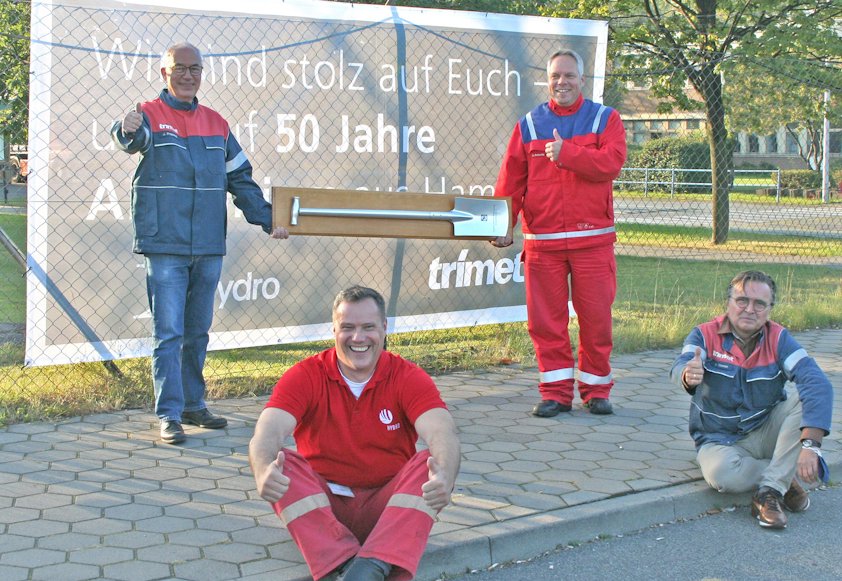The ambitious project gave the industrial location Hamburg a strong impetus and has survived several crises in recent years.

Around 1,100 people work in the aluminum smelter and in the rolling mill with attached recycling plant and foundry. They supply the automotive industry, packaging manufacturers and plant builders with around 150,000 tons of aluminum every year. With the adaptation to the power supply from renewable energies, the Hamburg aluminum plant is today setting an example for the future viability of domestic industrial production.
Promising beginning
On September 22, 1970, construction began on the Reynolds Metal Company's aluminum smelter and rolling mill. After three years of construction, the plant started work. The US company, then the third largest aluminum producer in the world, established a location in a booming region.
At the same time, a large power plant and an alumina factory went into operation in Stade. This ensured the supply of electricity and aluminum oxide, the most important raw materials for aluminum production. In addition, there was the good infrastructure in Hamburg with the recently completed Elbe tunnel.
Today Trimet Aluminum SE operates the aluminum smelter, which produces around 135,000 tons of aluminum annually. Most of this supplies the rolling mill operated by Norsk Hydro with an attached foundry, where the light metal is further processed and prepared for industrial production.
Employees mastered crises
The employees of both companies are proud of their aluminum plant. “The shared history is a strong basis that we can also feel in our everyday work. Together we will ensure that this location is fit for the future, ”says Hydro Plant Manager Jan Peterlic.
In the Trimet workforce, the construction work is still going on after the aluminum smelter has been shut down in the meantime. “Many colleagues repaired and started up the cold ovens with their own hands 13 years ago. This created a special sense of togetherness, which shapes us to this day, ”says Trimet plant manager Dr. Jörg Prepeneit.
After the location got into difficulties in the 1970s due to the oil crisis and was taken over by new shareholders, the aluminum smelter in particular fell into crisis at the beginning of the millennium. Rising electricity prices made energy-intensive aluminum production less and less profitable in an international comparison. In 2005, the then owners closed the hut, and more than 500 employees lost their jobs. At the end of 2006, the Essen-based family company Trimet took over the aluminum smelter, brought the workforce back and put the electrolysis furnaces back into operation.
Since then, the operators have continuously invested in the technical modernization of the production facilities and their focus on resource conservation and climate protection.
Strong for the future
Hydro built an additional recycling furnace in the foundry in 2008. Up to 50,000 tons of recycled aluminum are produced here annually from beverage cans, license plates, production leftovers and other products.
The aluminum smelter supports the conversion of the energy supply to renewable energies. In a pilot project, Trimet is currently testing a process in which the electrolytic ovens adapt to fluctuating amounts of electricity from wind and solar power plants. The three wind turbines on the site of the aluminum plant are therefore also a sign that the future of the industrial location is being shaped in Hamburg-Altenwerder.
: 22 September 2020






